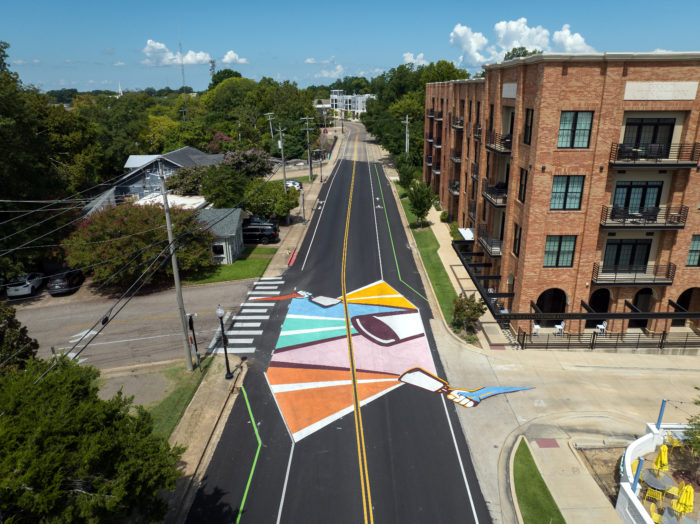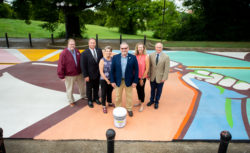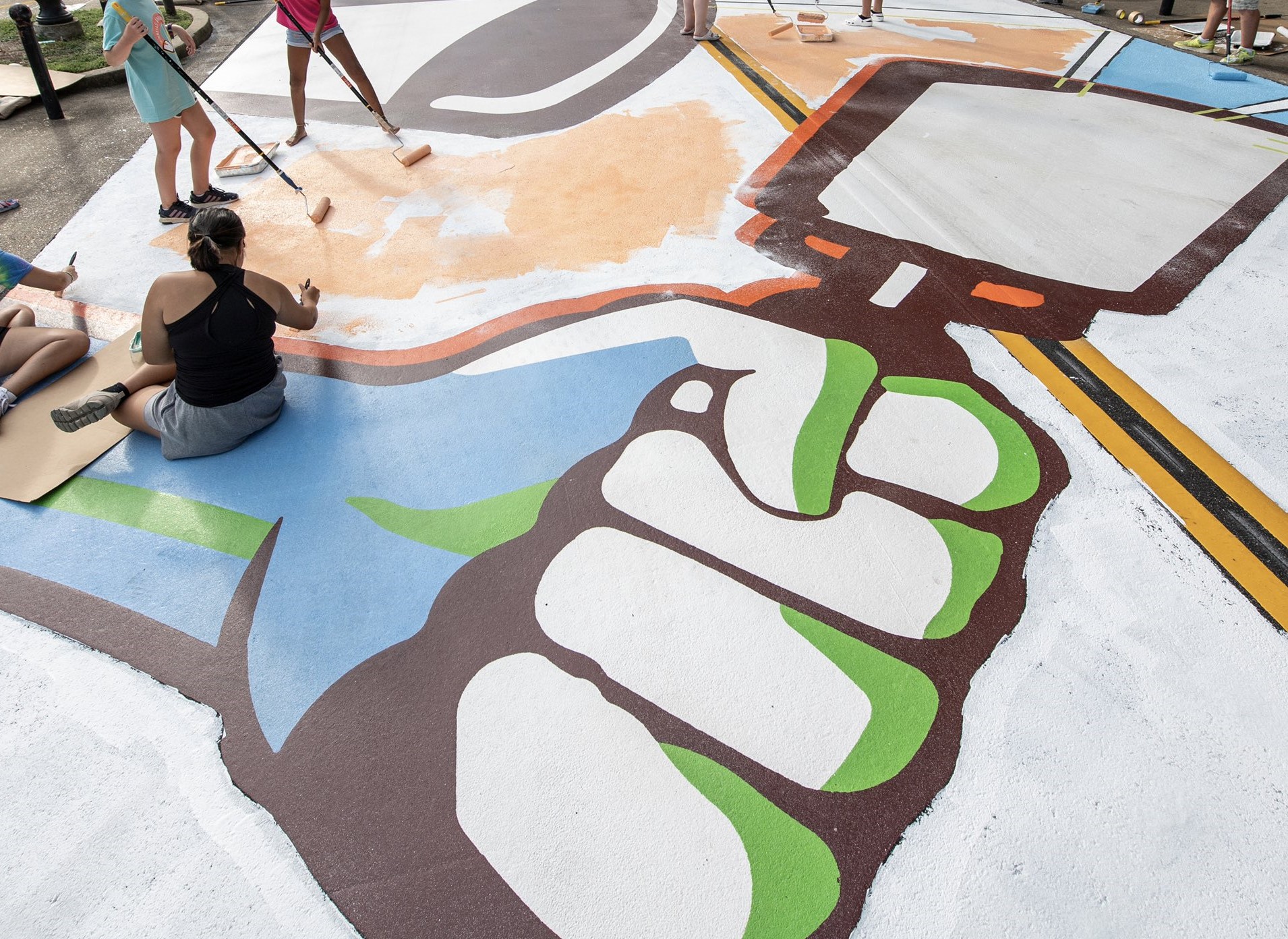Mississippi State University’s (MSU) Fred Carl Jr. Small Town Center focuses on providing meaningful solutions to Mississippi’s small towns. It prides itself on forming partnerships that engage communities and leave a sustainable positive impact.

Safety and sustainability intersect in a soy-biobased street project. Mississippi State University’s Fred Carl Jr. Small Town Center secured a grant that made the City of Starkville one of 26 cities from around the nation to receive a $25,000 in 2021 from Bloomberg Philanthropies’ Asphalt Art Initiative. Credit: Bloomberg Philanthropies
So, when the Center began a beautification and design project in its homebase of Starkville, it was glad to find the perfect partner in Ohio-based company Aexcel. The Center chose Aexcel’s soy-biobased BioStripe® that qualifies for certification under the U.S. Department of Agriculture (USDA) BioPreferred Program for their project funded with a grant from the Bloomberg Philanthropies’ Asphalt Art Initiative.
They created street art connecting downtown Starkville with the MSU campus. The effort began as a community and economic impact project that turned into so much more.
“This project turned out even better than we thought,” says the Center’s Director Leah Kemp. “We approached beautifying University Drive from an economic and safety perspective. But we quickly found out that BioStripe offered a lot more benefits than that.”
One area of University Drive, a road that leads directly to MSU’s campus in Starkville, sometimes bears heavy vehicle traffic. Yet, it is also used by pedestrians ranging from mothers with their small children to students leaving campus. Many citizens walk among the restaurants, businesses, and residential buildings in the area.
Kemp and her team wanted to raise awareness for passengers who take University Drive on their commutes while also raising the profile of nearby businesses. To increase visibility of the space and strengthen the identity of the community, the Center chose BioStripe to beautify the stretch of road with a series of murals, bringing together the campus and community.
The Small Town Center team also note that local leaders wanted the mural installations to be as permanent as possible. They were pleased to learn that other BioStripe projects have lasted for nearly a decade. Additionally, its availability made BioStripe an easy choice.
The Center then hosted multiple volunteer days for the community to get involved and help with the painting process. Dozens showed up and the murals turned out to be a big hit. Kemp notes that the murals are now identifiable to drivers, provide great art for the citizens of Starkville, and safely increase foot traffic to the businesses in the area.
“Safety, of course, was our number one priority,” adds Fran Pharis, an architect with the Center. “But after seeing the town’s reaction, we’re also betting the restaurants and business around the projects will get even more attention and enhance the city brand. We also really loved the positive environmental impact of the product and that it was safer to use around kids, many of whom helped us in the painting process.”

USB Director Philip Good poses with MSU leaders at the unique asphalt art project that used soy-biobased BioStripe® to beautify Starkville and raise safety awareness. From Left: Vice President of the Division of Agriculture, Forestry and Veterinary Medicine Keith Coble; Dean, College College of Agriculture and Life Sciences Scott Willard; Dean of the College of Architecture, Art and Design Angi Bourgeois; Good; Director, Fred Carl Jr. Small Town Center Leah Kemp; and Provost David Shaw. Photo credit: MSU Office of Public Affairs
BioStripe’s traffic paint is made with soybean oil to avoid harmful microparticles, such as Polycyclic Aromatic Hydrocarbons (PAHs), which can be found in many traditional traffic paints. The United Soybean Board initially funded research with Polynt-Reichhold that paved the way for many of Aexcel’s products. USB Director Philip Good, a soybean grower from Mississippi, paid a visit to Starkville to see the project’s completion.
“It’s certainly gratifying to know that U.S. soybean growers, through our checkoff, continue to partner with sustainability-minded companies that make such a positive impact in America’s small towns,” says Good, who also happens to be an MSU alumnus. “We are glad soy-biobased products like Aexcel’s BioStripe showcase how soybean growers are delivering sustainable soy solutions to these communities.”
For its part, the Small Town Center hopes to continue use of soy-biobased products as it works to support small towns in Mississippi. Kemp notes that Center is currently investigating other biobased products that may be a benefit in its projects moving forward.
Because of the potential for biobased products to create new markets for soybeans, U.S. soybean farmers have invested millions of dollars to research, test and promote biobased products. Much of this work was done through the United Soybean Board, which is composed of 78 U.S. soybean farmers appointed by the U.S. Secretary of Agriculture to invest soybean checkoff funds. As stipulated in the Soybean Promotion, Research and Consumer Information Act, USDA’s Agricultural Marketing Services has oversight responsibilities for the soybean checkoff.

